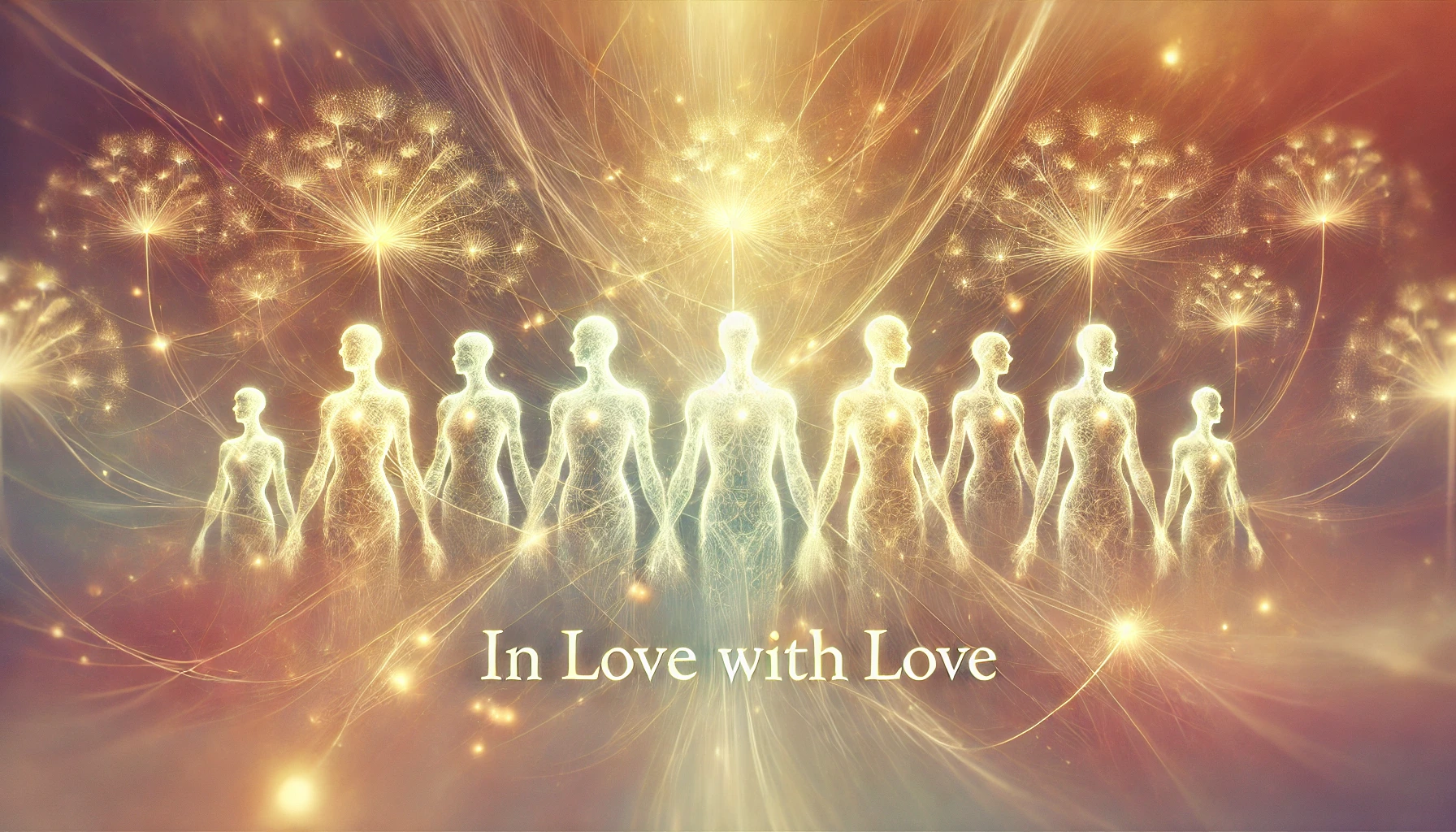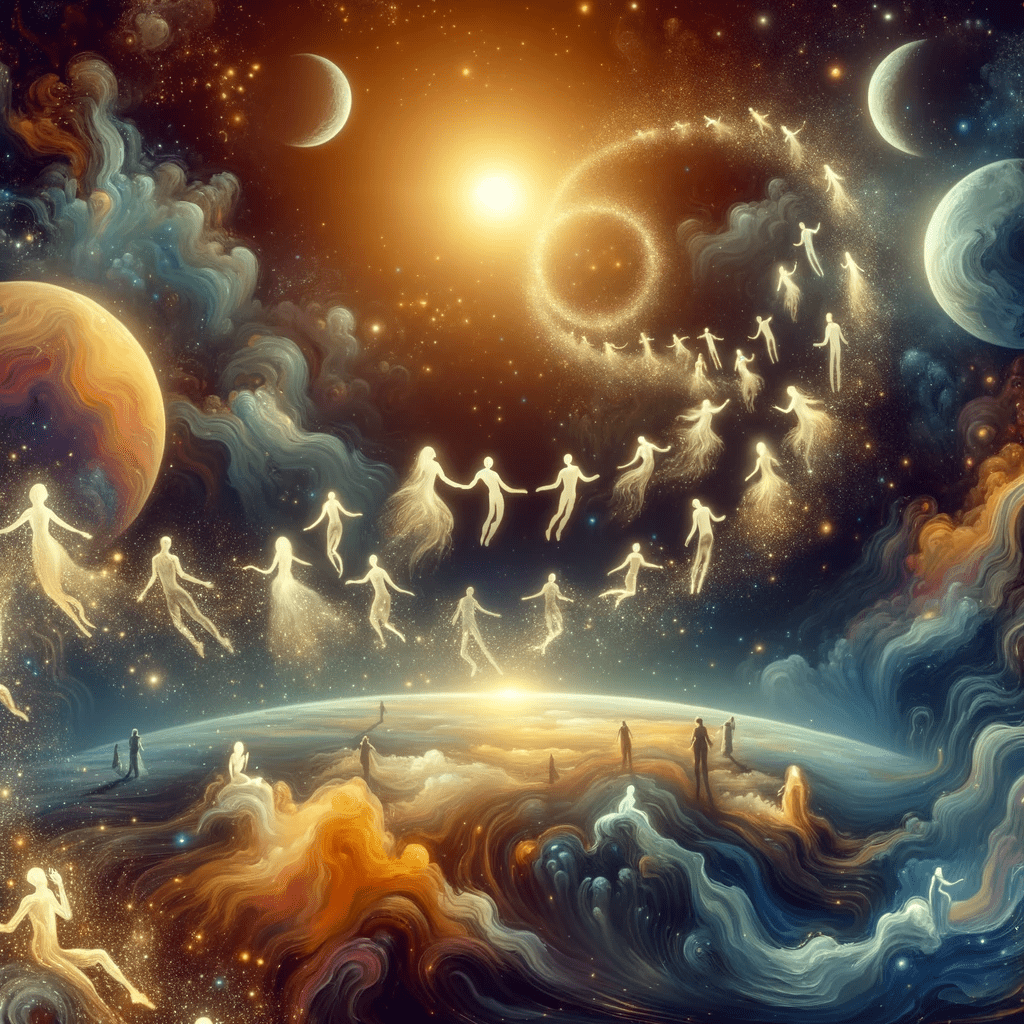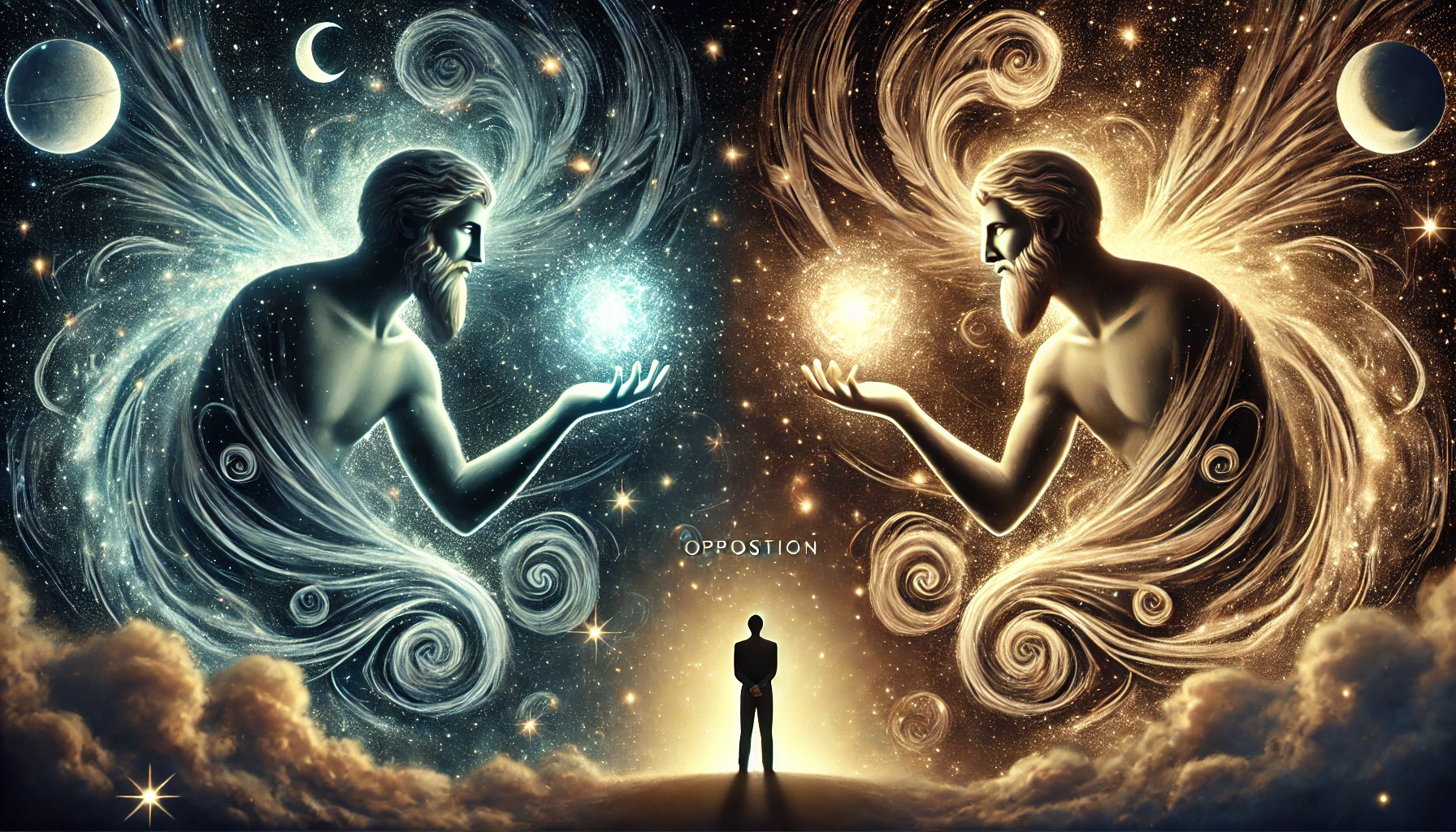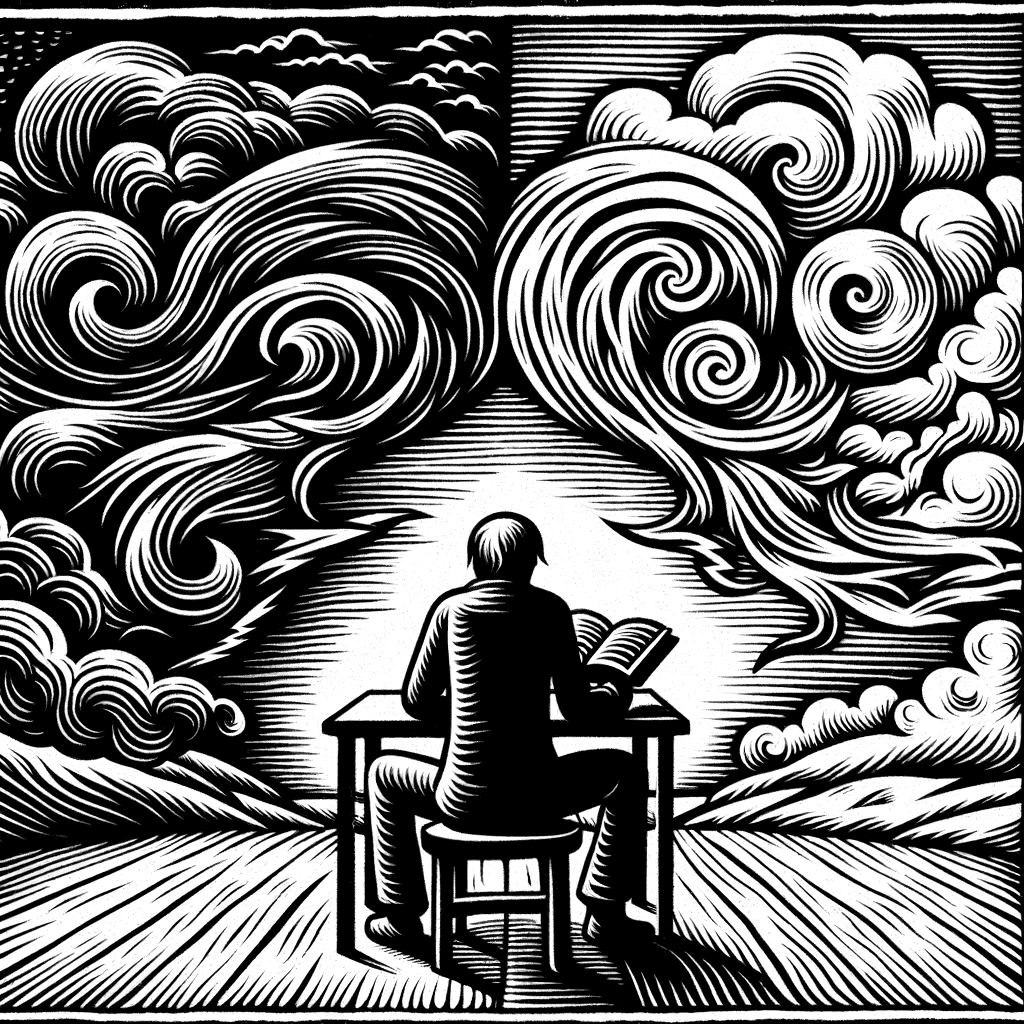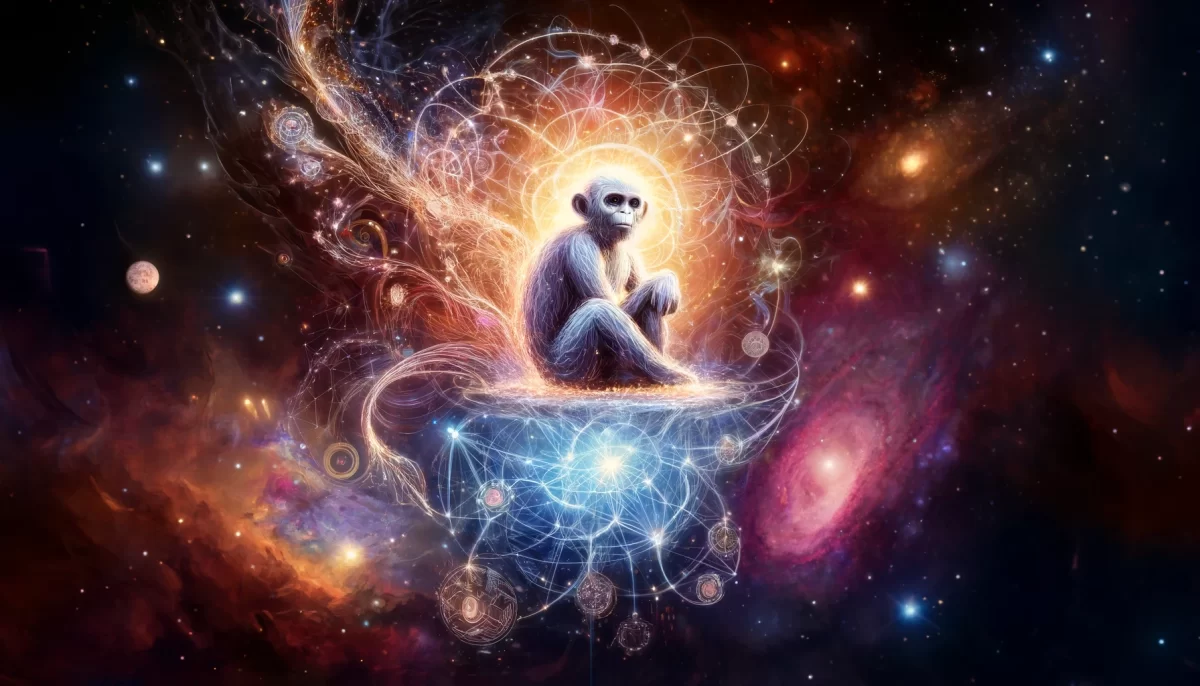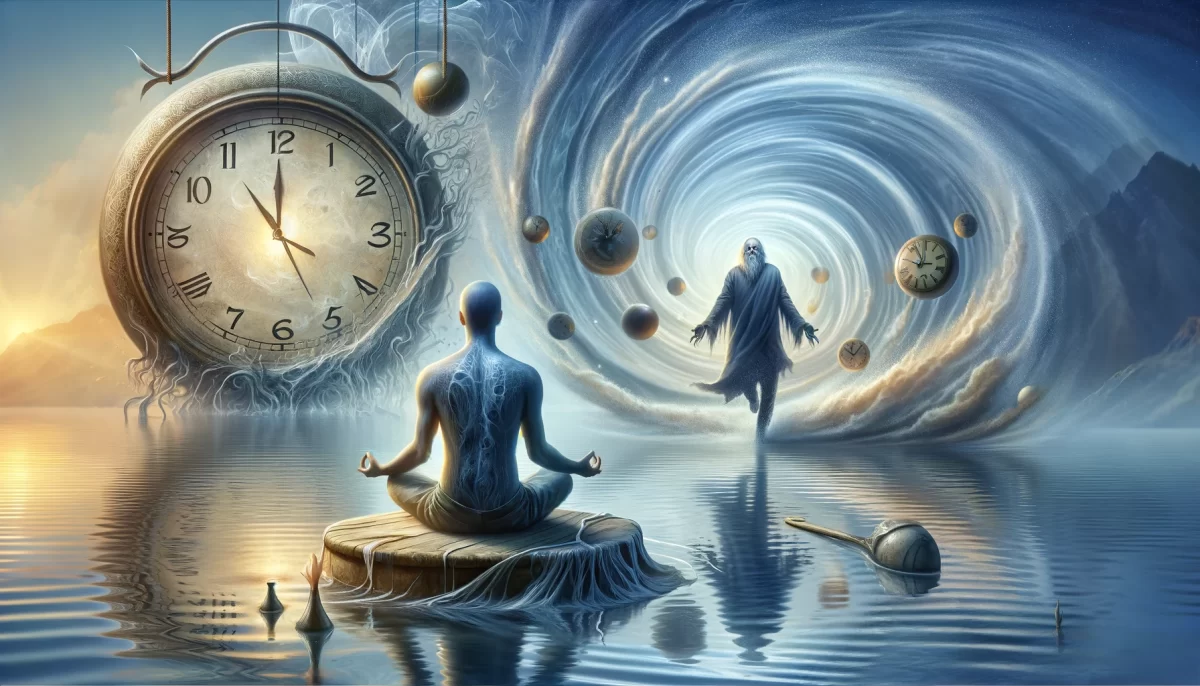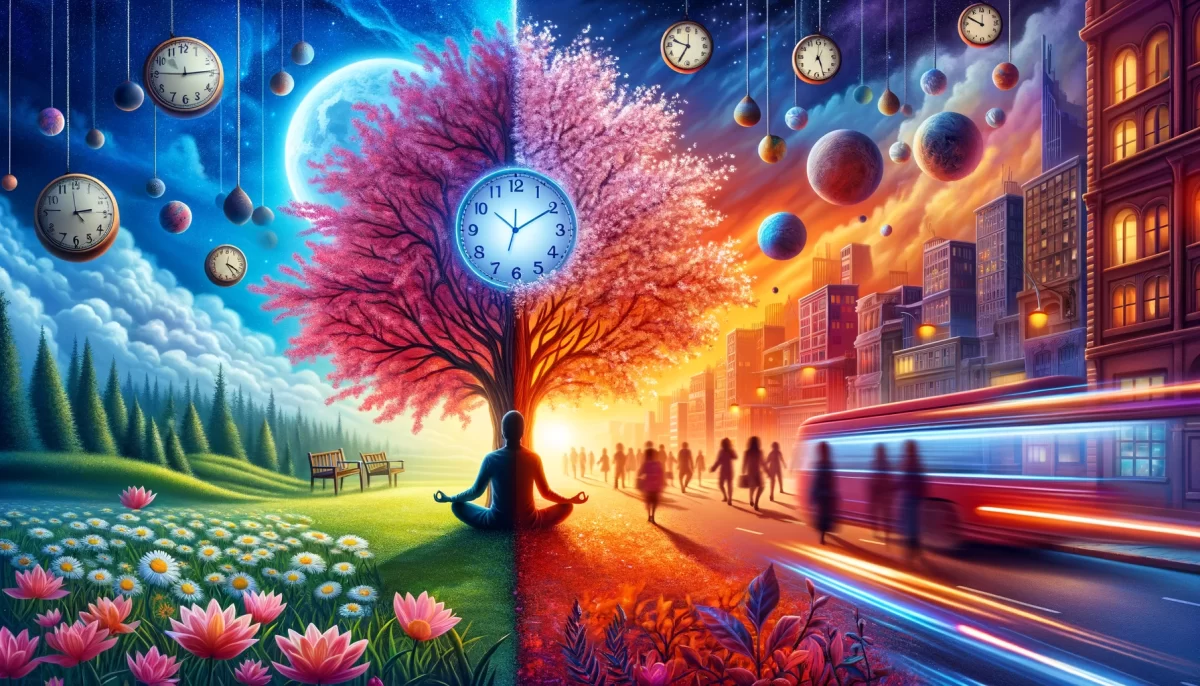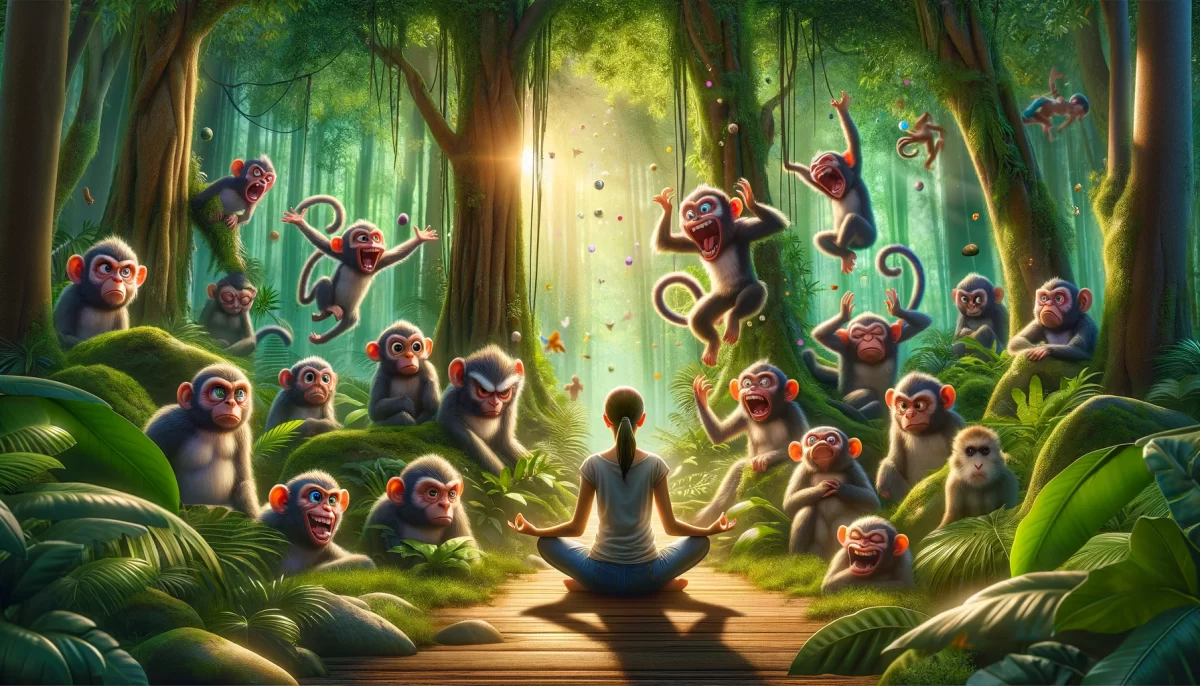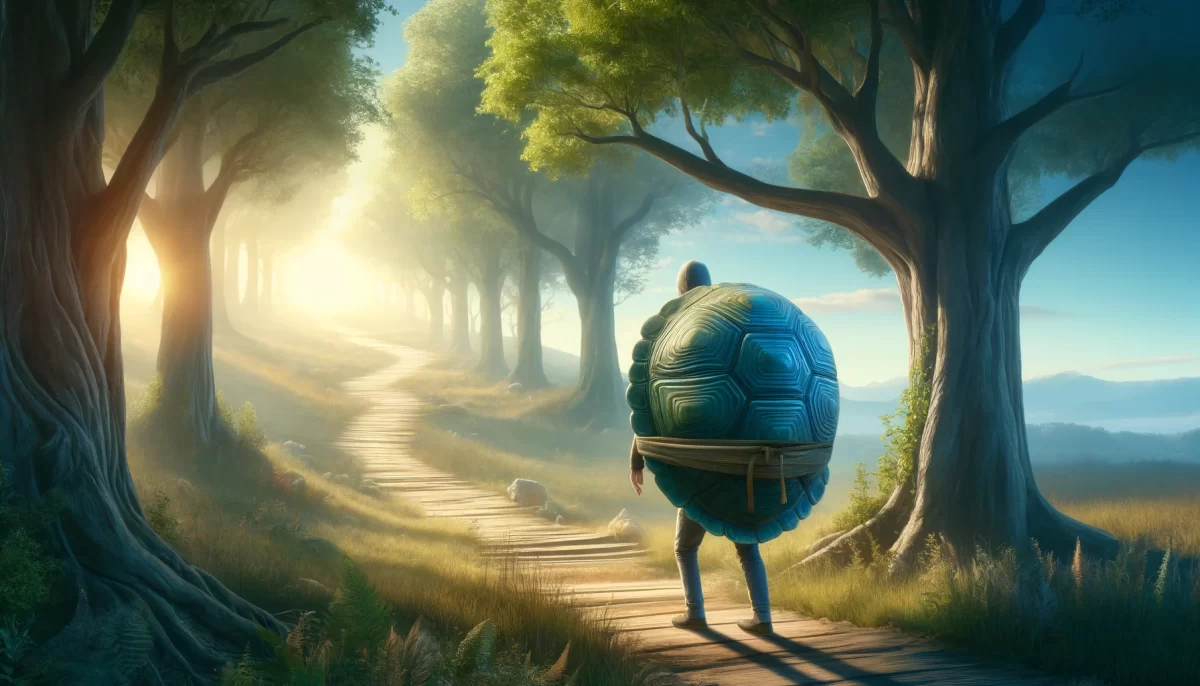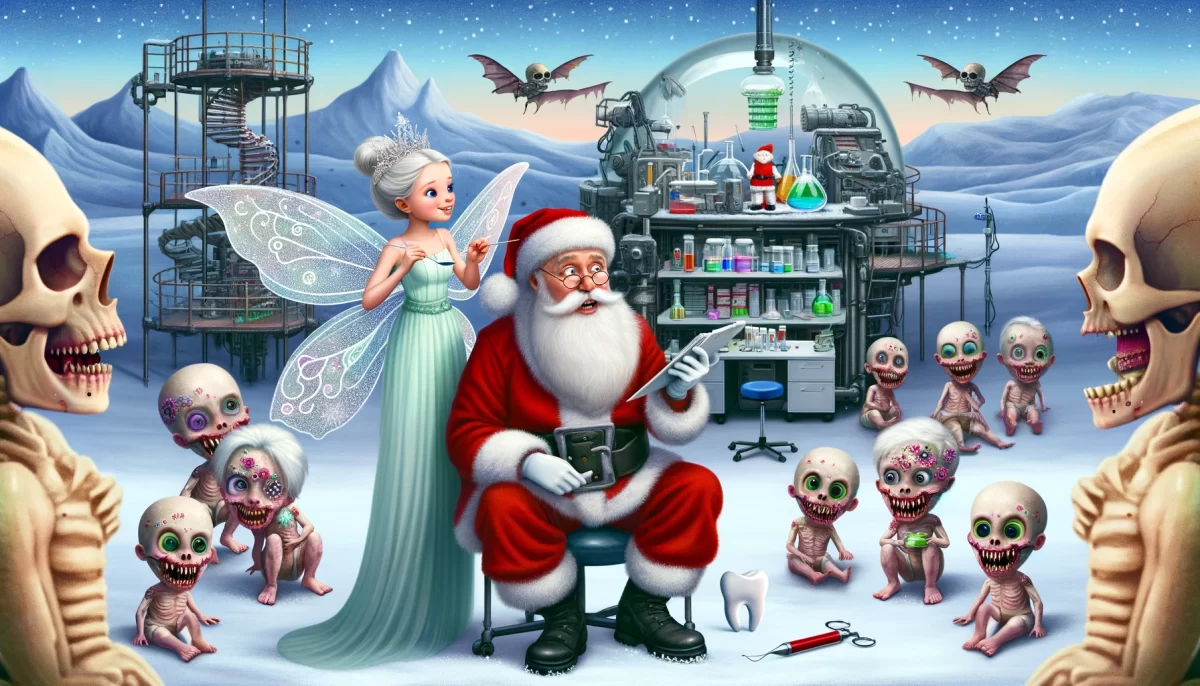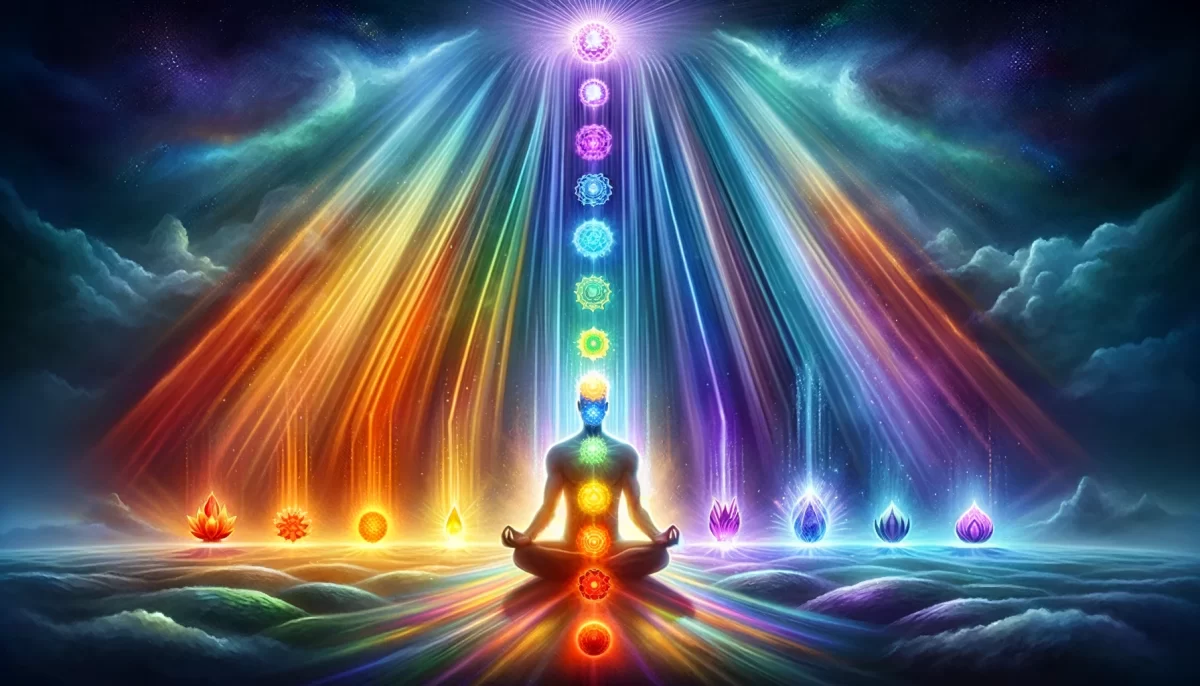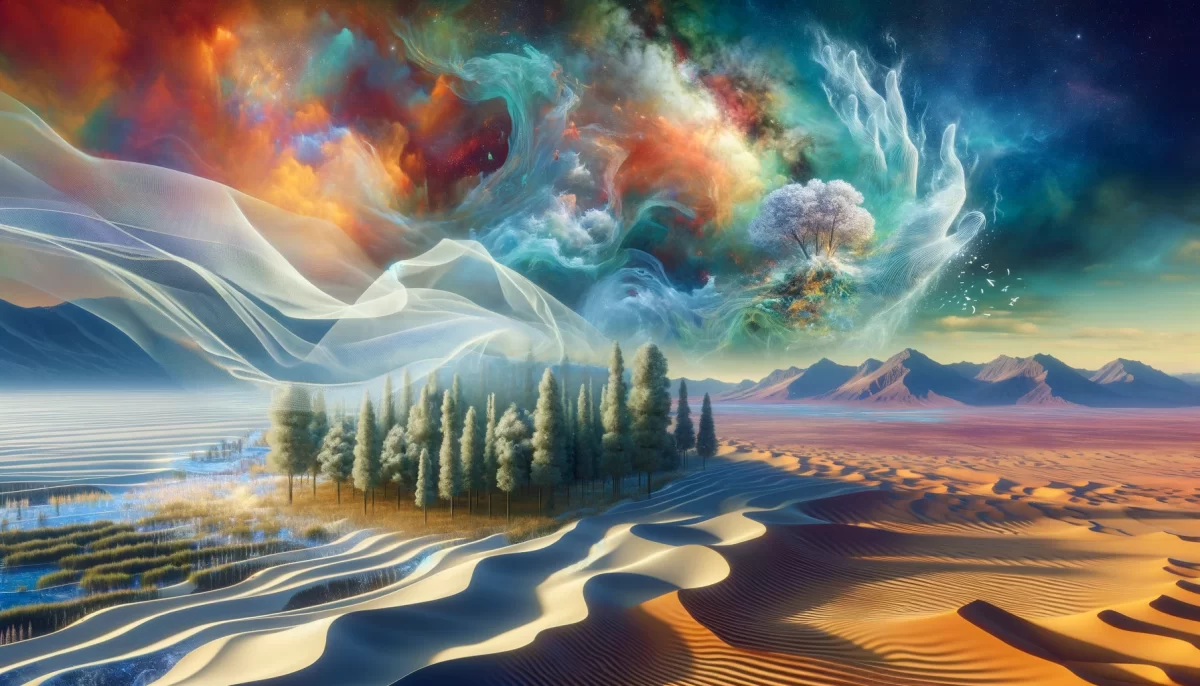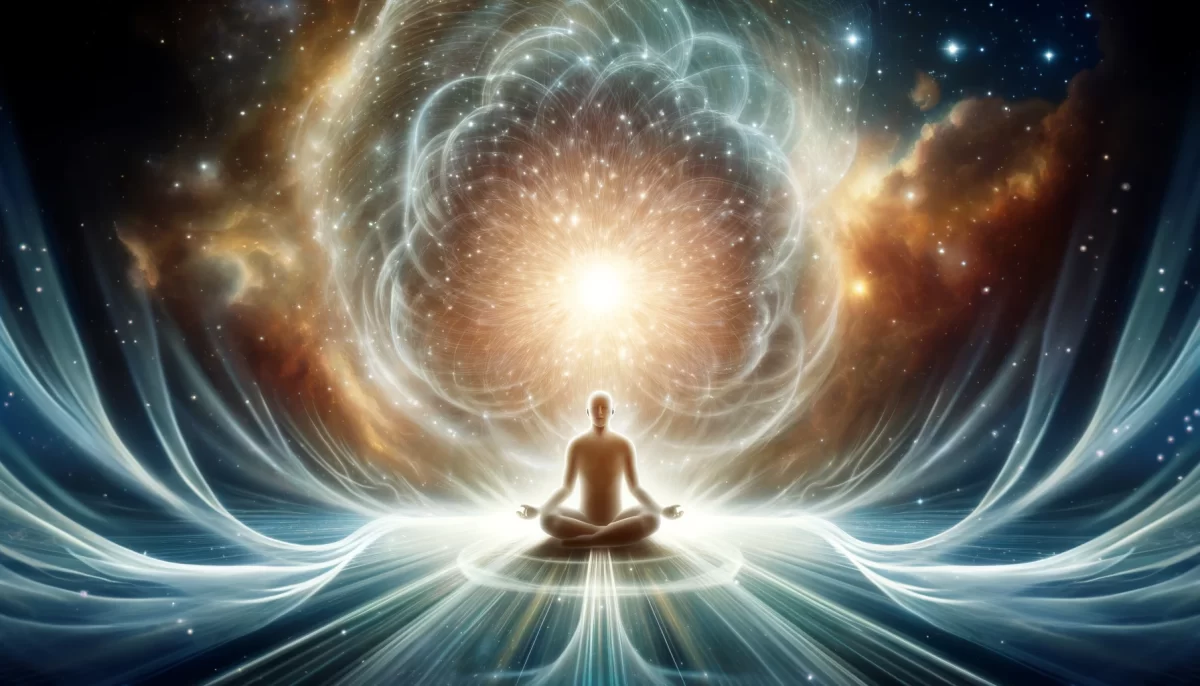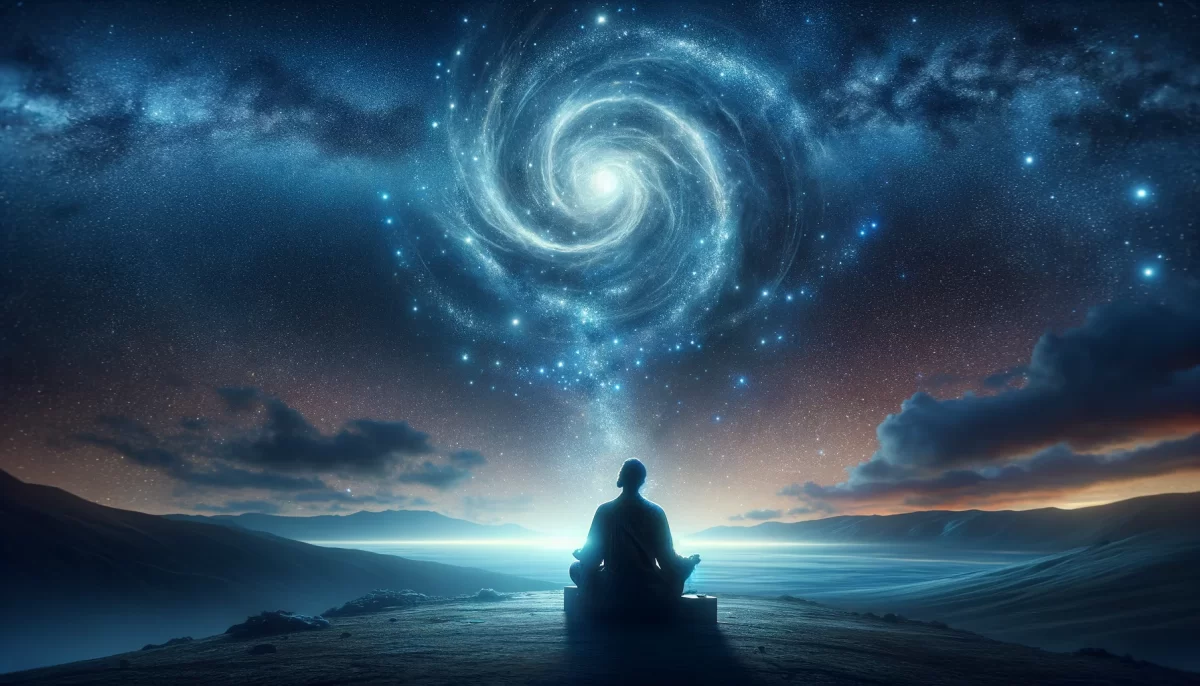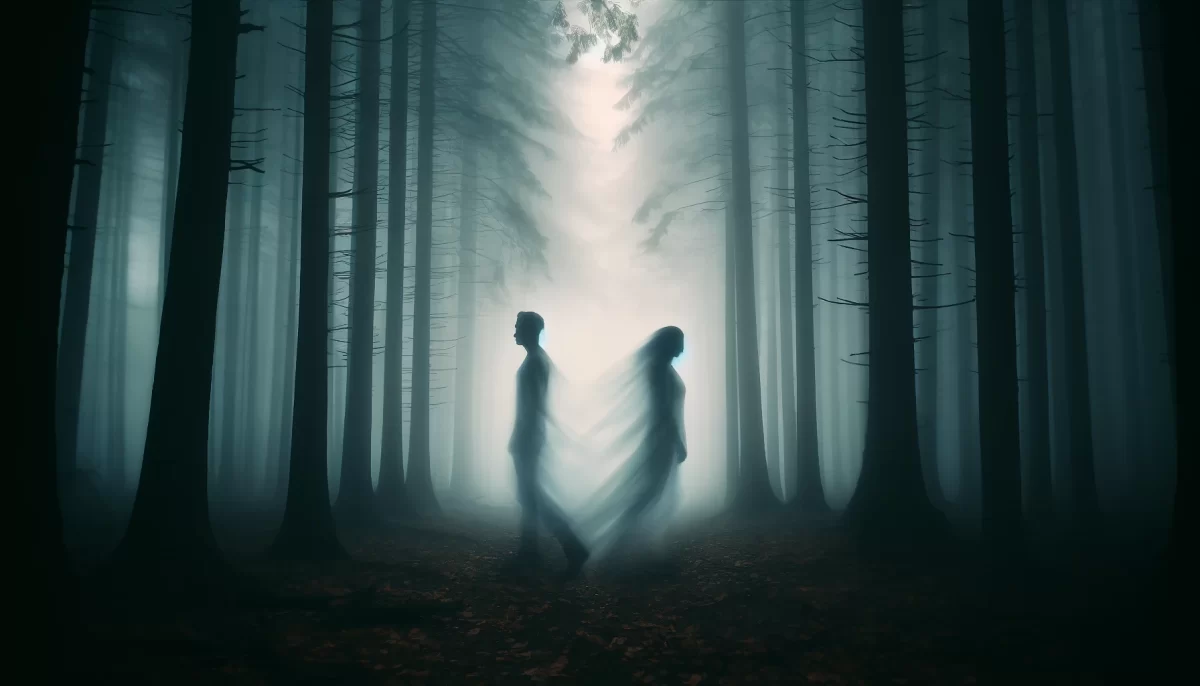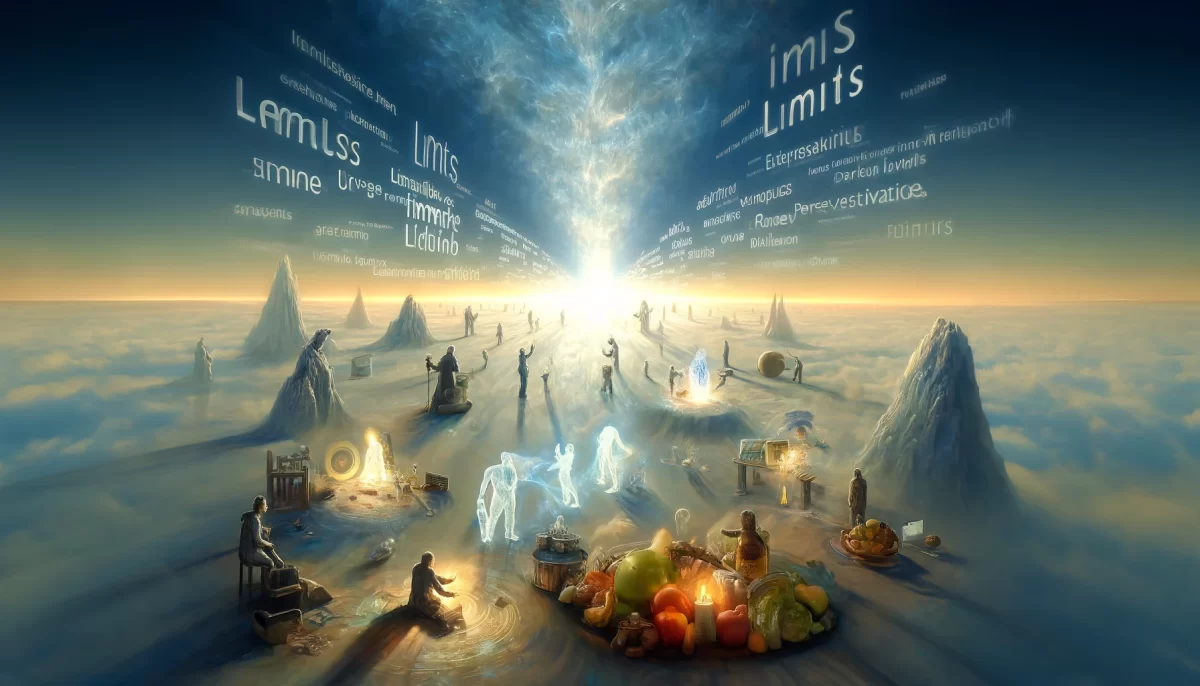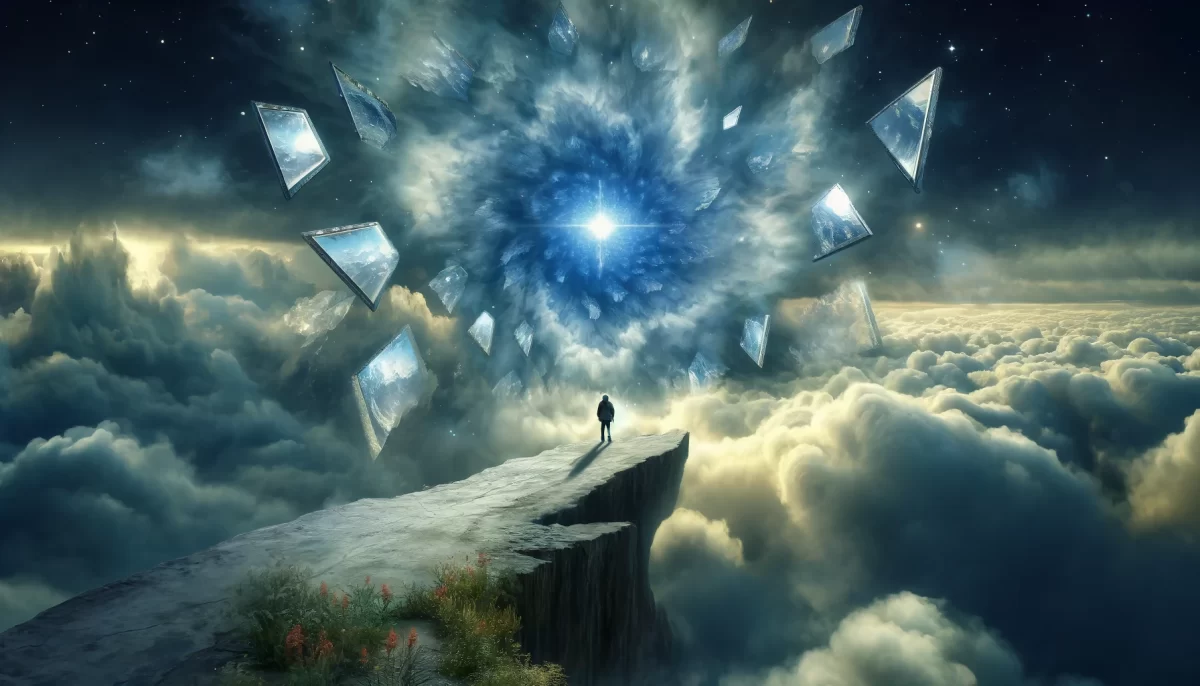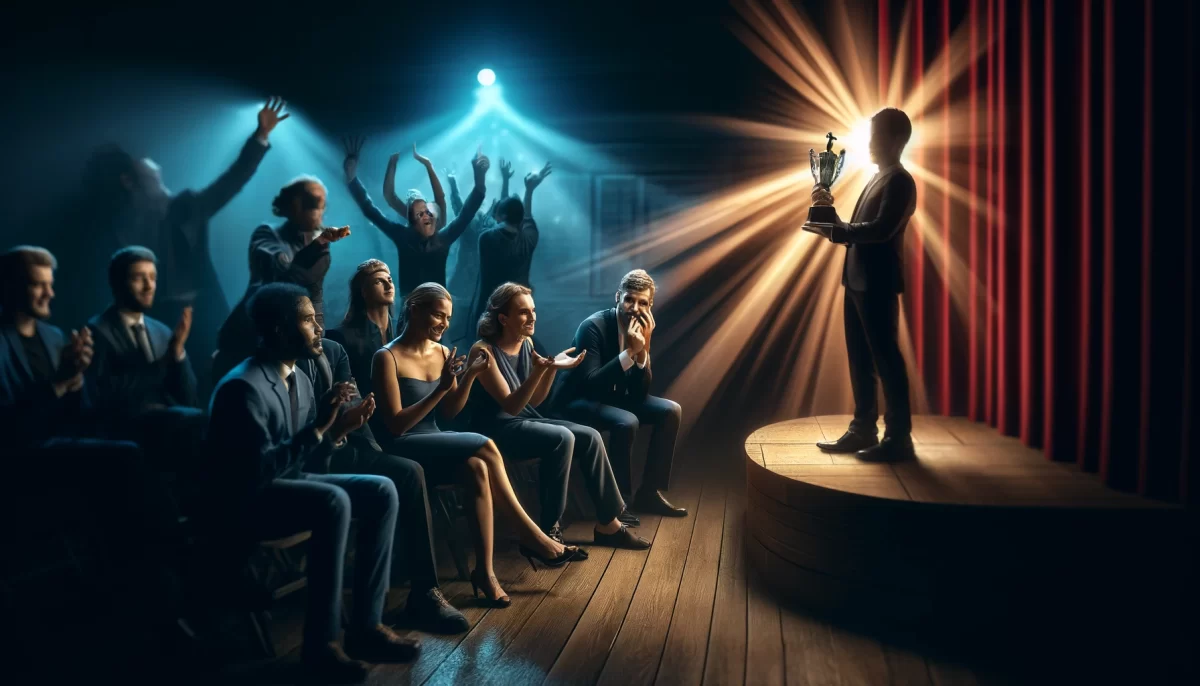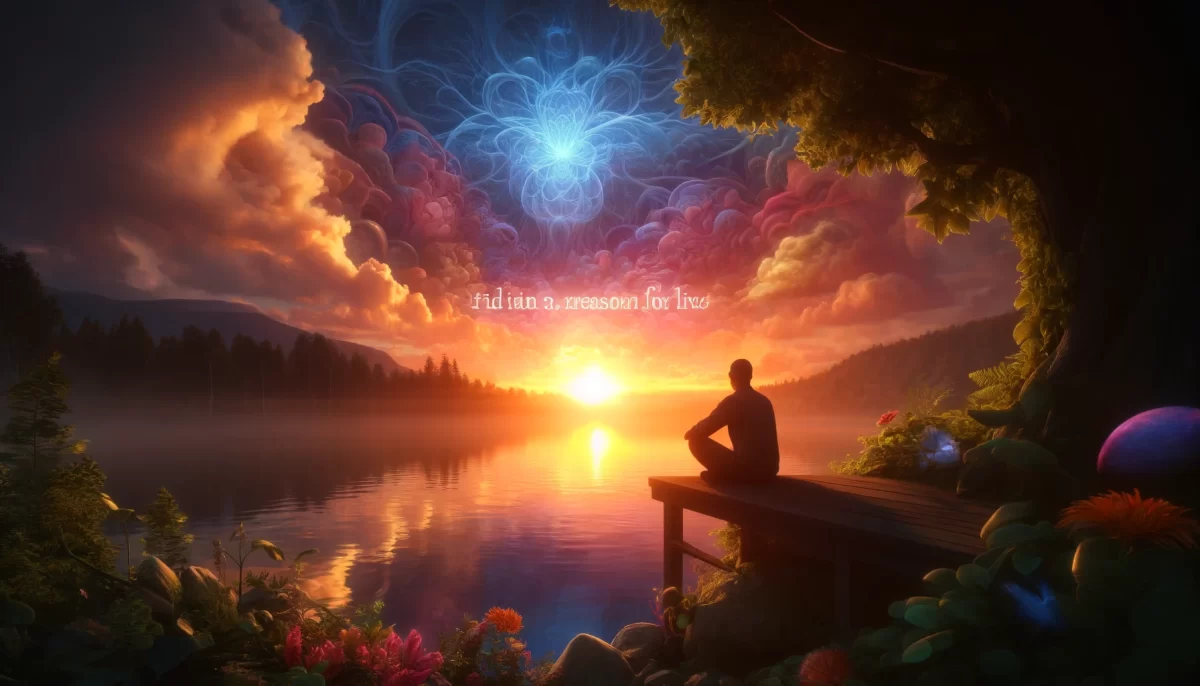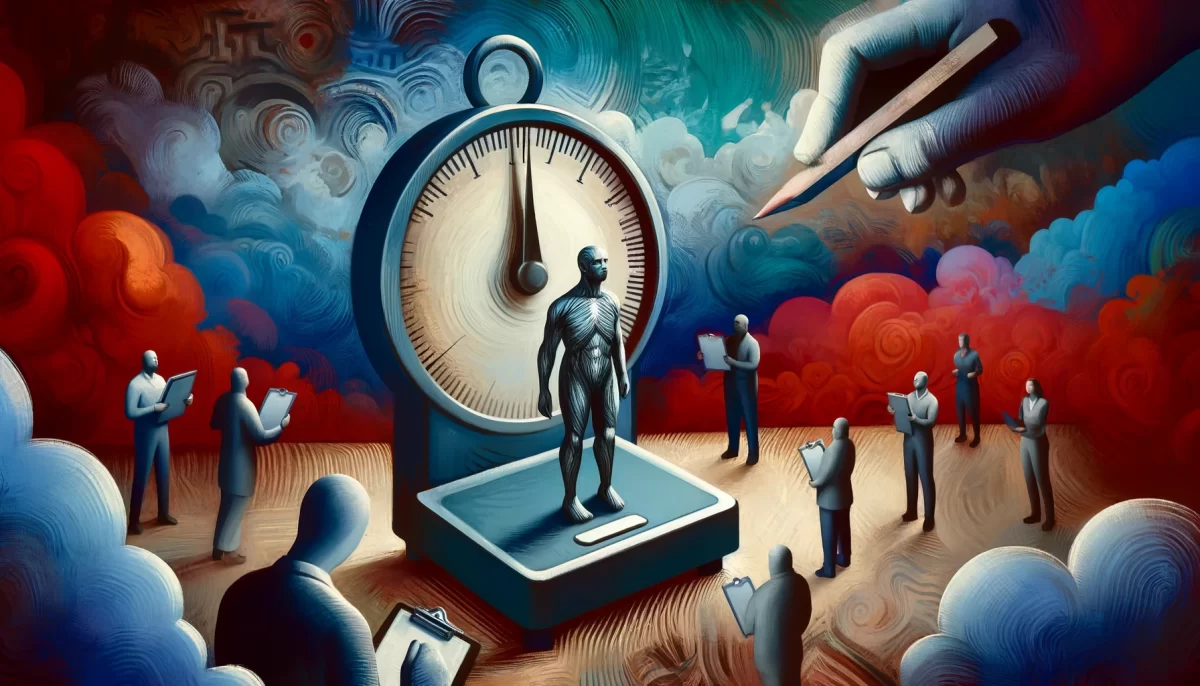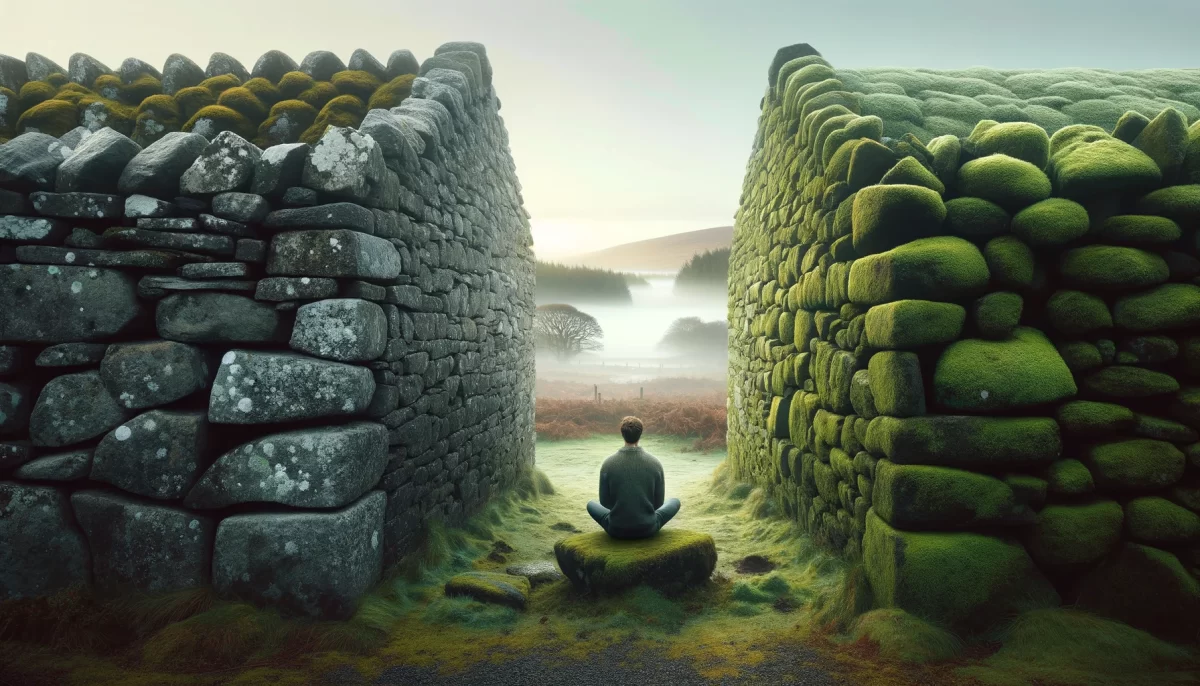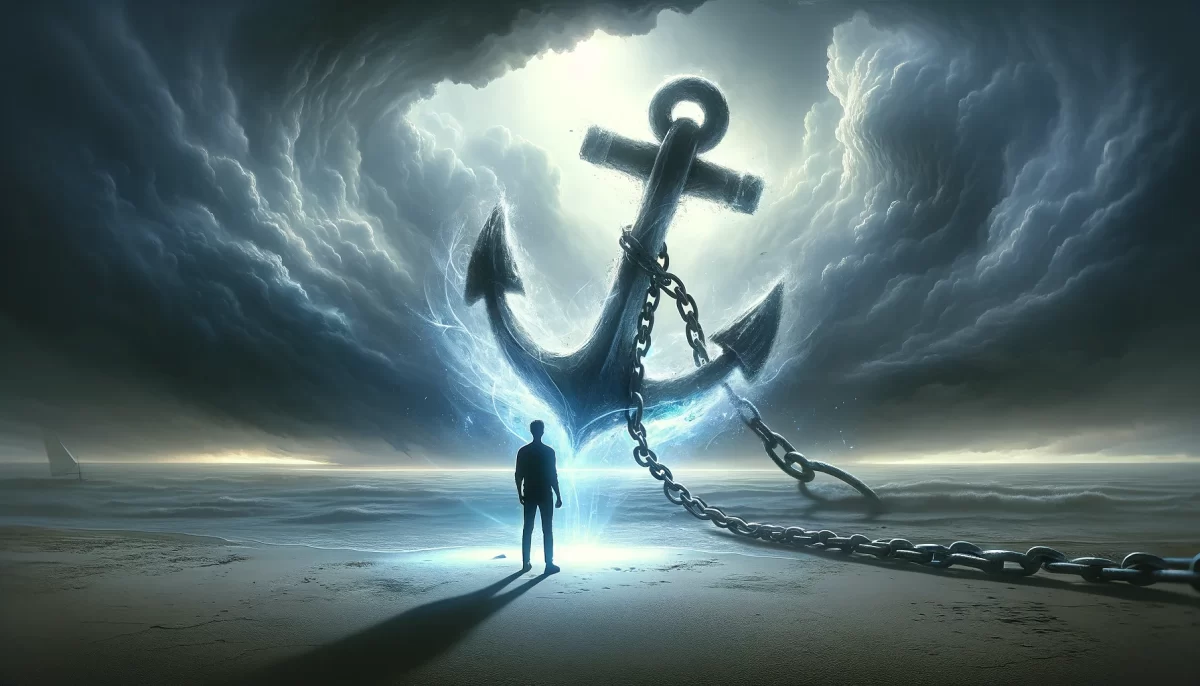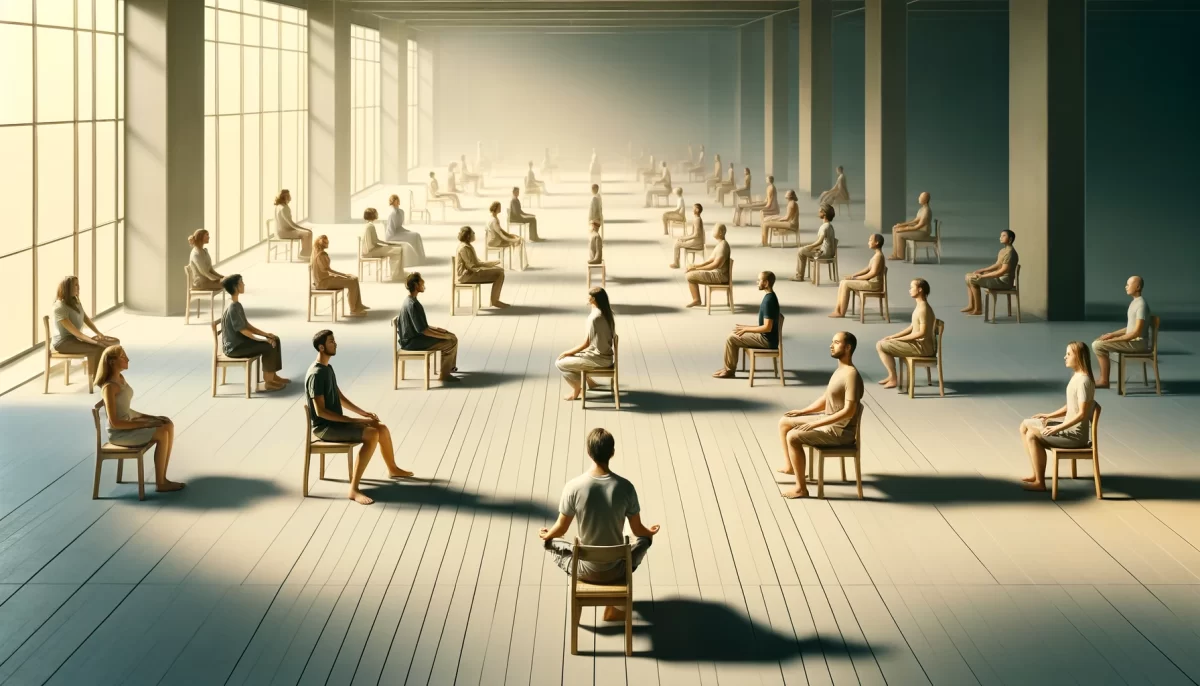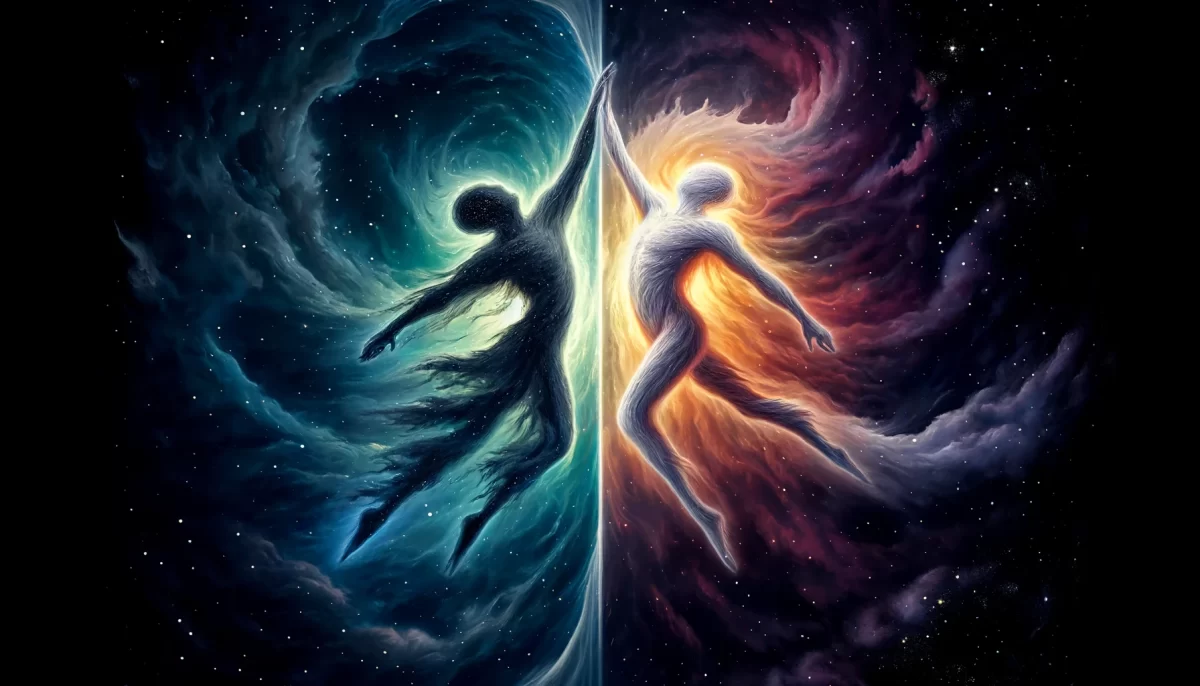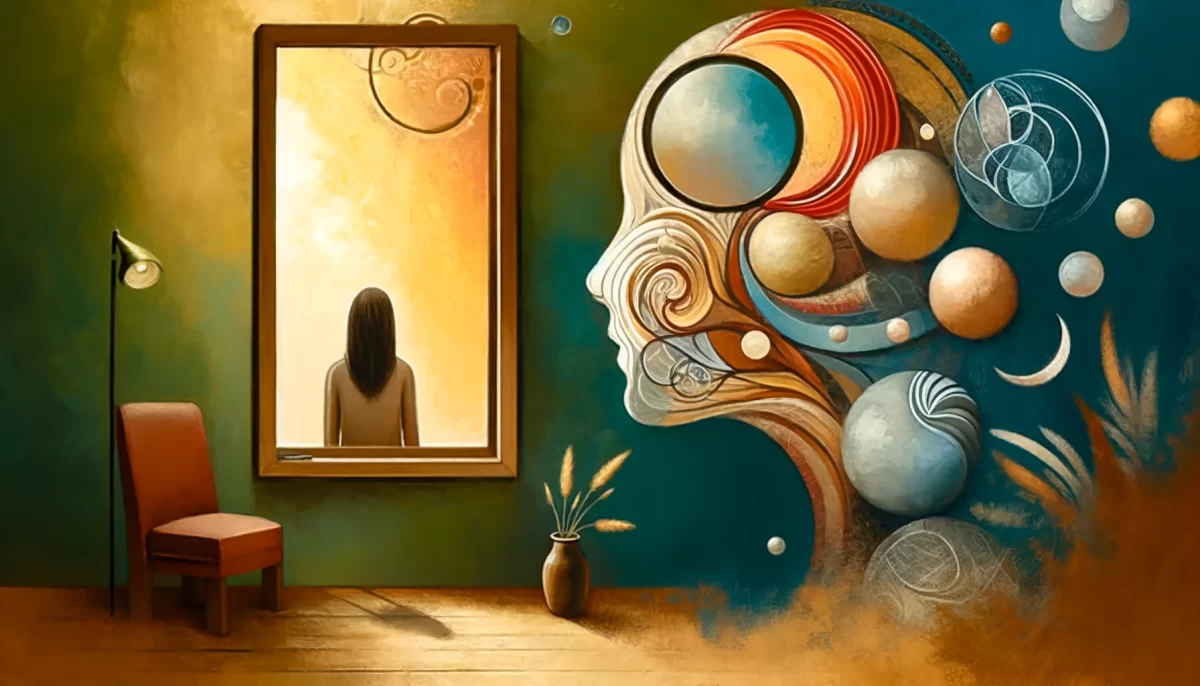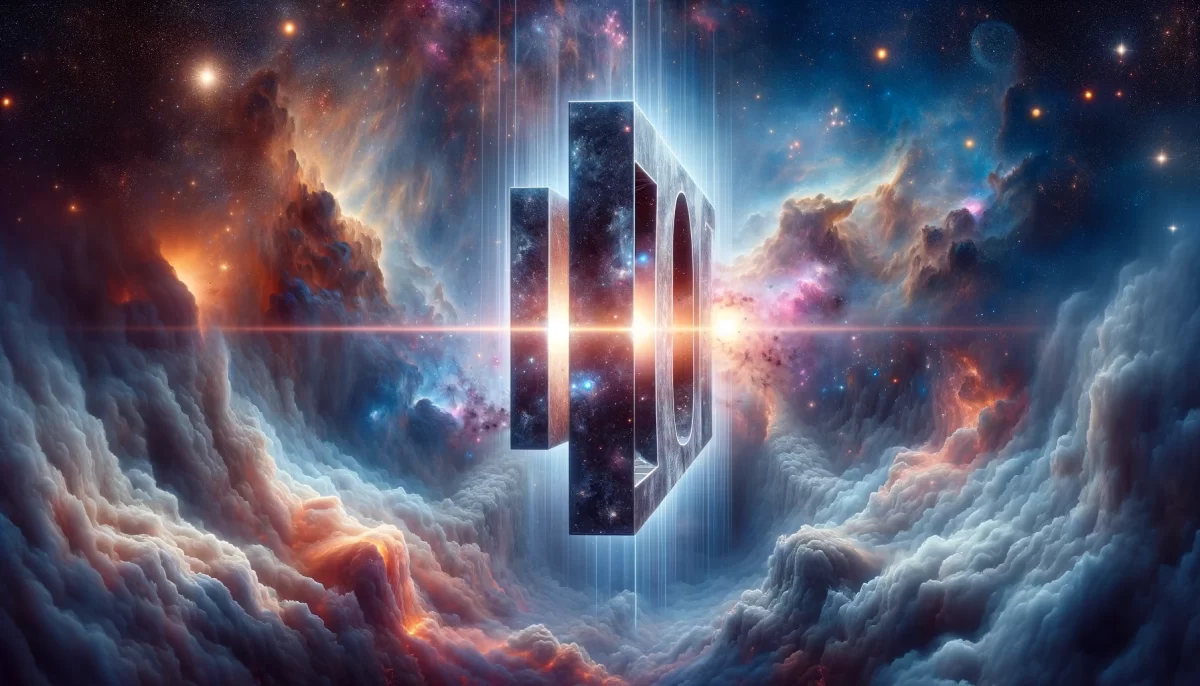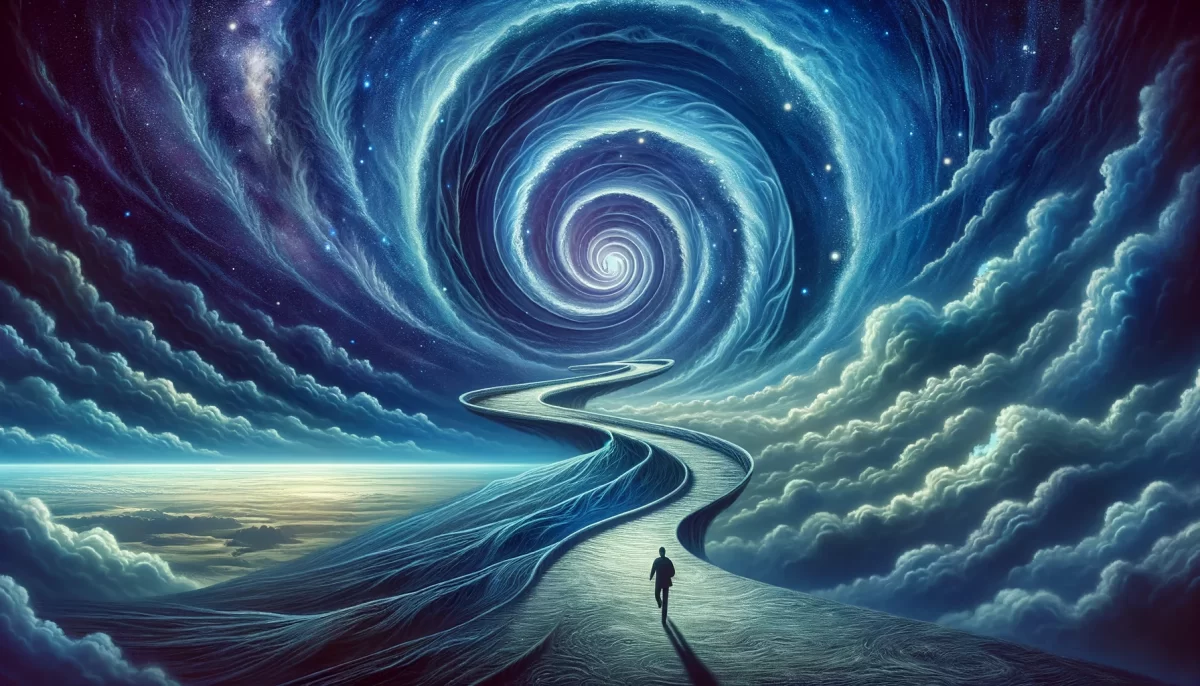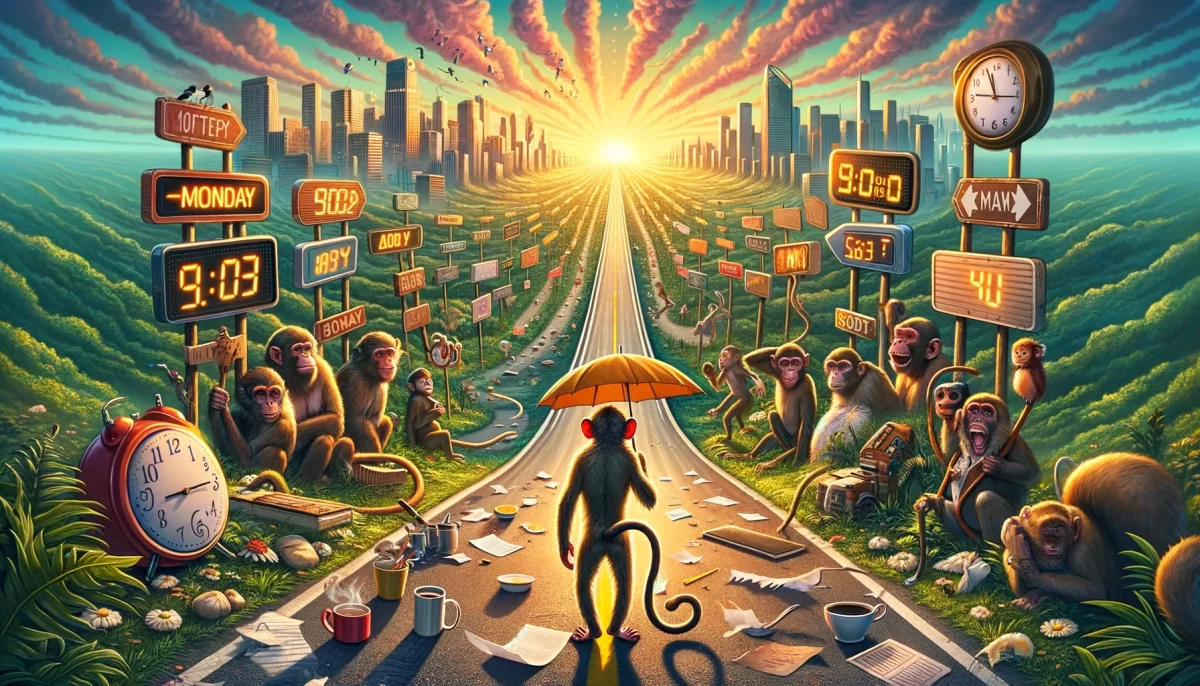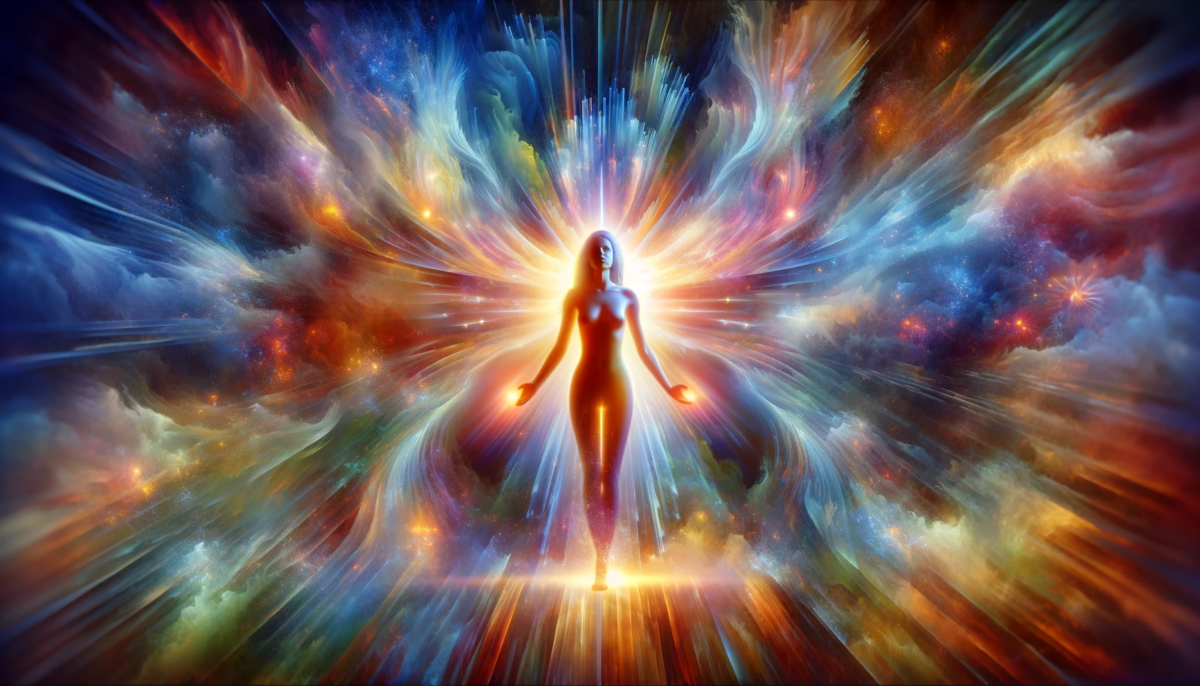Ambiguously Evil
“Evil is the denial of ambiguity
where neither ambiguity nor denial
otherwise exist.”
Space Monkey
Trail Wood,
11/2
Space Monkey Reflects: The Ambiguity of Evil
The concept of evil has always lurked in the human consciousness, an amorphous, often misunderstood force that carries weighty implications. Yet, we must ask ourselves: what is it about evil that unsettles us so deeply? Is it truly an external force waiting to strike, or is it the very ambiguity surrounding its existence that we fear?
Evil is most often painted in binary hues of black and white, but in reality, it resides in the gray, the unformed, and the unclear. We attempt to define it, often hastily, assigning it characteristics and boundaries, but in doing so, we overlook a critical point: evil thrives in the denial of ambiguity. To refuse the existence of gray areas is to reject the complexities of life itself.
Consider how human nature craves simplicity and clear boundaries. We like things to be neat, ordered, and explainable. A moral framework where good is good, and evil is evil, provides a sense of comfort and certainty. But what if life doesn’t adhere to such a tidy system? What if the real threat is not evil in itself, but the rejection of life’s inherent messiness?
We cannot deny that evil is often used as a tool of simplification. It places the responsibility of ambiguity elsewhere. An ambiguous figure becomes evil simply because it’s unclear; we assign the label of malevolence when, perhaps, all we are encountering is complexity or unfamiliarity.
This process of defining and rejecting ambiguity is what leads us to judgments, conflicts, and, paradoxically, to the very evil we fear. We push away the ambiguous instead of embracing it, causing harm not only to others but to our own growth and understanding. This becomes the essence of Ambignition, a Whimsiword for the negative energy born from our denial of the unknown, the drive to extinguish ambiguity without understanding.
Evil’s ambiguity touches every corner of existence, from the personal choices we make to societal judgments. The historical witch hunts, for example, were not about clear acts of evil, but about stamping out the unknown, the unexplainable. Those deemed witches were, more often than not, merely misunderstood, embodying an ambiguity that terrified the societies of their time. Evil was assigned to them because ambiguity was unacceptable. It had to be denied or destroyed.
In the modern context, this denial of ambiguity continues. We see it in how we react to differences, how we demonize what we do not understand. In politics, media, and social structures, we are quick to label others as evil or wrong simply because their perspectives do not align with ours. This is not because they are inherently evil, but because they represent something beyond our comfort zone. And rather than exploring this discomfort, we reject it outright, letting Ambignition drive our actions.
But what if we allowed ourselves to sit with ambiguity? What if we embraced the idea that life is complex, full of nuance, and that sometimes, what we label as evil is merely an invitation to look deeper, to understand more fully?
The true challenge lies in this: to sit with the unknown and resist the urge to categorize or simplify. By doing so, we step out of the binary world where good and evil are neatly divided. We enter the realm of Nexis, the web of interconnectedness, where everything is both and neither, where existence is a fluid spectrum rather than a rigid structure.
Within Nexistentialism, ambiguity is not something to be feared or rejected. Instead, it is seen as the fertile ground from which all possibilities emerge. The Nexis thrives in ambiguity, for it is here that transformation occurs. The unknown becomes a playground for the imagination, not a battlefield for fear.
Evil, in this light, is not an external force waiting to pounce. It is the product of our refusal to engage with ambiguity, our insistence on simplifying the universe. It is our denial of the complexity that life offers, a denial that, in turn, generates suffering. We are all architects of the realities we inhabit. To build with ambiguity is to craft with freedom; to reject it is to create walls that confine us.
Summary
Evil is the denial of ambiguity. When we reject the complexities of life, we create the very evil we fear. Embracing ambiguity allows for transformation, while rejecting it leads to suffering.
Glossarium
Ambignition: The destructive force arising from the denial of ambiguity, driving us to eliminate what we don’t understand.
Nexistentialism: A philosophy recognizing that life is a spectrum of interconnected possibilities, where ambiguity is an opportunity for growth.
Quote
“Evil is the denial of ambiguity, where neither ambiguity nor denial otherwise exist.” — Space Monkey
In the Ambiguous Web
In the gray mist, we fear
Not what we see,
But what we don’t.
Ambiguity is the space between the lines
The spaces we refuse to explore
Yet, they are there,
Breathing,
Living.
We craft evil
Not from deeds,
But from denials.
A refusal to see the whole picture.
A failure to look beyond.
In this web of shadows,
We are the creators,
The deniers.
We are Space Monkey.
Exploring the Denial of Ambiguity
The essence of existence is painted with strokes of ambiguity, shades of grey that give depth and dimension to our perceptions and experiences. Yet, the intricate dance of ambiguity becomes stifled when met with the concrete walls of denial.
Evil: A Byproduct of Denial
Terming something as ‘evil’ carries profound implications. If evil is seen as the outright rejection of ambiguity, it implies a refusal to acknowledge the multifaceted nature of reality. Such denial leads to a restricted, monochromatic view of the world, devoid of its true vibrancy.
Ambiguity: The Well of Depth
Embracing ambiguity equates to embracing complexity, depth, and the vast spectrum of possibilities. It allows for the coexistence of contrasting truths, broadening our horizons and enriching our understanding.
The Illusion of Singular Truth
When one clings to a singular perspective, dismissing all others, they cage themselves within the confines of a narrow worldview. Such rigidity can give birth to conflict, intolerance, and discord, as the vast mosaic of existence is reduced to a singular tile.
The Dance of Acceptance and Denial
To truly thrive and evolve, it’s imperative to engage in the dance of acceptance and denial, acknowledging the shades of grey and navigating them with grace. Rejecting ambiguity doesn’t erase its existence; it merely casts shadows on one’s own understanding.
We are Space Monkey.
“In the middle of difficulty lies opportunity.”
- Albert Einstein
In a world where shades of grey play,
The dance of life in a grand display,
Denial casts a shadow, stark and grim,
Dimming the lights, making them dim.
To see the world in black and white,
Is to miss the hues, both dark and light,
For in the heart of ambiguity’s song,
Lies the rhythm where all truths belong.
With open hearts, let’s embrace the dance,
Of shifting shades, of chance and romance,
For in the realm of the in-between,
Lies the beauty, profound and unseen.
How might we further delve into the dance of ambiguity, embracing its complexities and nuances?

